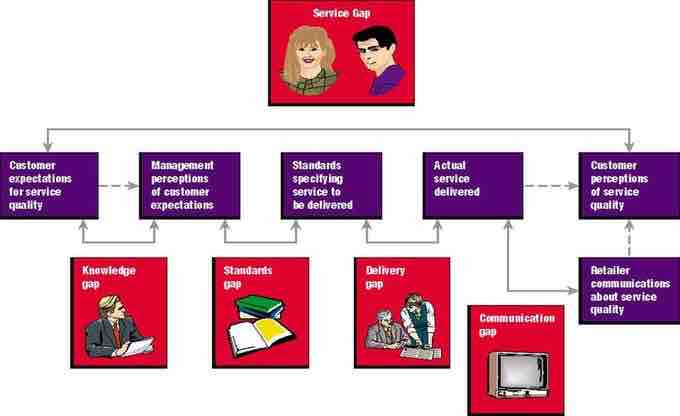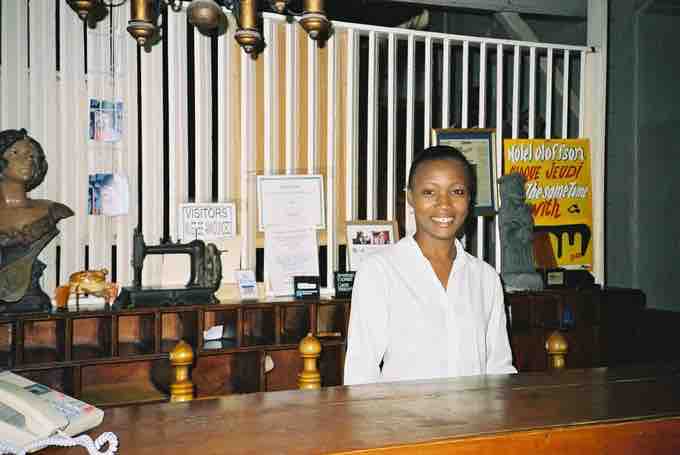The GAP Model
The Service Quality Model, also known as the GAP Model, was developed in 1985. It highlights the main requirements for delivering a high level of service quality by identifying five ‘gaps' that can lead to unsuccessful delivery of service.

The Gap Model
The diagram shows the different gaps in the model, including the Knowledge Gap discussed here.
Customers generally have a tendency to compare the service they 'experience' with the service they 'expect' to receive; thus, when the experience does not match the expectation, a gap arises.
GAP 1:
Gap between consumer expectation and management perception: This gap arises when the management or service provider does not correctly perceive what the customer wants or needs. For instance – hotel administrators may think guests want better food or in-house restaurant facilities, but guests may be more concerned with the responsiveness of the staff or the cleanliness of their rooms.

Consumer Expectations
Hotel administrators may think guests want better food or in-house restaurant facilities, but guests may be more concerned with the responsiveness of the staff.
Factors that affect the size of the knowledge gap include:
Market research
- Before introducing a new product or service into the market, a company must conduct market research to understand whether there would be any demand for the product, and what features should be incorporated. The better this process is conducted, the smaller the knowledge gap will be.
- There are methods of ensuring that customer desires are taken on board. These include: comprehensive studies, gauging satisfaction after individual transactions (surveys immediately after a purchase is made), customer panels and interviews, and through customer complaints.
Communication channels
- The fewer the layers between management and customer contact personnel, the more likely that customer preferences will be incorporated into higher-level decision making on the product.
GAP 2 :
Gap between management perception and service quality specification: This is when the management or service provider might correctly perceive what the customer wants, but may not set a performance standard. An example here would be that hospital administrators may tell the nurse to respond to a request ‘fast', but may not specify ‘how fast'.
GAP 3:
Gap between service quality specification and service delivery: This gap may arise in situations pertaining to the service personnel. It could happen due to poor training, incapability or unwillingness to meet the set service standard. An example would be when a doctor's office has very specific standards of hygiene communicated but the hired staff may have been poorly trained on the need to follow these strict protocols.
GAP 4 :
Gap between service delivery and external communication: Consumer expectations are highly influenced by statements made by company representatives and advertisements. The gap arises when these assumed expectations are not fulfilled at the time of delivery of the service. For example – a hospital printed on its brochure may have clean and furnished rooms but in reality, it may be poorly maintained – in this case the patient's expectations are not met.
GAP 5:
Gap between expected service and experienced service: This gap arises when the consumer misinterprets the service quality. The physician may keep visiting the patient to show and ensure care, but the patient may interpret this as an indication that something is really wrong.